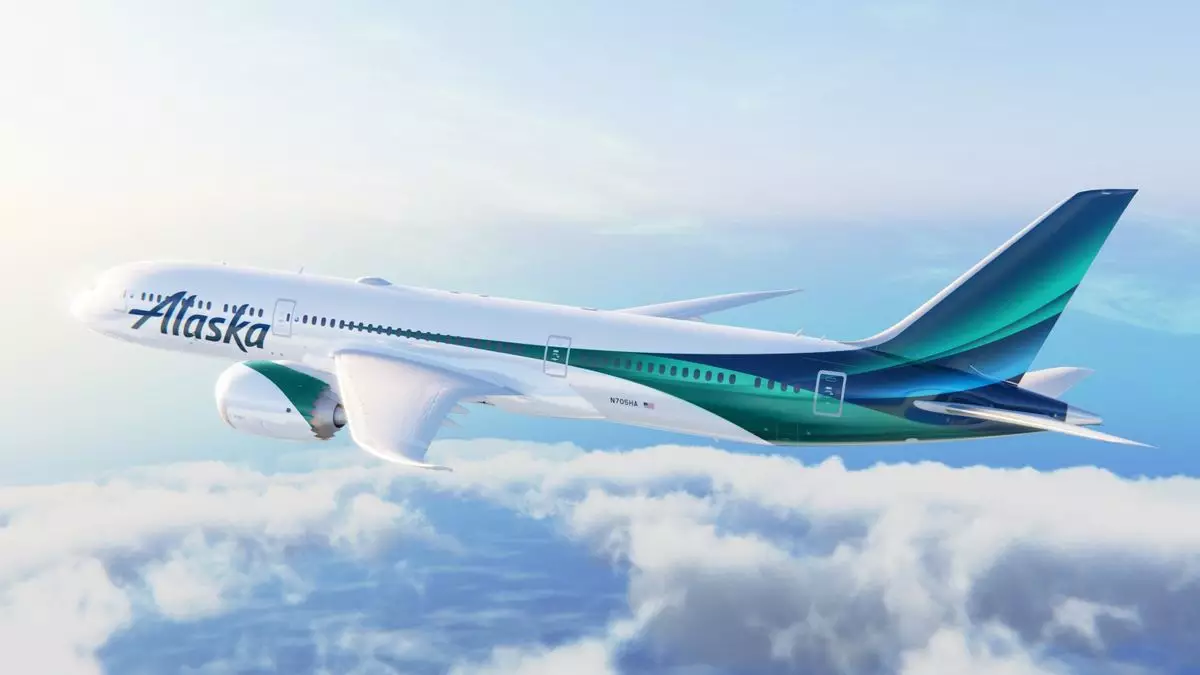Alaska Airlines is embarking on a transformative journey that promises to reshape how travelers perceive transcontinental connectivity. By launching flights to London Heathrow and Reykjavik from its burgeoning hub in Seattle, the airline is boldly asserting its presence on the global stage. This isn’t merely about expanding routes; it’s about elevating the passenger experience through strategic innovation and a clear vision for the future of long-haul travel. Although specific start dates have yet to be confirmed, the commitment to these destinations illustrates Alaska’s intent to challenge traditional European carriers and carve out its niche in the competitive international arena.
Strategic Fleet Innovations and Modern Design Aesthetics
The airline’s decision to deploy the Boeing 787 Dreamliner—equipped with a plush two-cabin configuration—is more than a logistical move; it’s a statement about quality and passenger comfort. The Dreamliner’s reputation for fuel efficiency and reliability aligns well with Alaska’s environmental ambitions and cost management goals. Most compelling is the avatar-inspired livery, inspired by the ethereal aurora borealis, which not only distinguishes Alaska’s fleet visually but also embodies the spirit of adventure and connection to the northern wilderness. The debut of these revamped aircraft in January signals a fresh chapter, with all fleet planes sporting the new look by spring, highlighting Alaska’s commitment to modernity and brand distinction.
Strategic Route Expansion and Competitive Edge
The planned Seattle-London route, slated to run daily throughout the year, signifies a decisive step into the highly lucrative transatlantic market. Coupled with seasonal Reykjavik flights and upcoming Rome services, Alaska is strategically positioning itself as a major player in the international sphere. The choice to operate these routes with Boeing 787s, known for superior passenger comfort—including lie-flat business suites—demonstrates a priority on premium service that can stand toe-to-toe with dominant carriers like Delta, Virgin Atlantic, and British Airways. Notably, Alaska’s introduction of the Boeing 737 Max for its shorter Iceland routes exemplifies operational agility, ensuring efficiency without compromising passenger expectations.
Implications for Alaska’s Future and Industry Dynamics
This ambitious expansion signifies more than just route additions; it redefines Alaska Airlines’ aspirations and capacity for international influence. Transitioning from a primarily domestic carrier to a formidable global competitor signals a bold evolution rooted in strategic fleet investment and brand rejuvenation. As Alaska builds out Seattle into a bustling international hub, it challenges established players and invites a reevaluation of regional airline dominance. Their entry into the transatlantic market is likely to lead to increased competition, better prices, and more options for travelers eager to explore Europe and beyond, all while experiencing a fresh brand identity that echoes both innovation and adventure.

